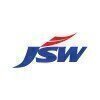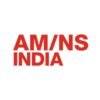
i
JSW Steel
Filter interviews by
JSW Steel Melter Interview Questions, Process, and Tips
JSW Steel Melter Interview Experiences
1 interview found
I applied via Newspaper Ad and was interviewed in Dec 2022. There were 4 interview rounds.

(3 Questions)
- Q1. Melting point of hot metel
- Ans.
The melting point of a hot metal refers to the temperature at which the metal changes from a solid to a liquid state.
The melting point of a metal can vary depending on the type of metal.
Common metals like iron have a melting point of around 1,538 degrees Celsius.
Some metals, like tungsten, have very high melting points due to their strong metallic bonds.
The melting point can also be affected by impurities in the metal.
- Q2. Melting point of iron
- Ans.
Iron has a melting point of 1538 degrees Celsius.
Iron melts at 1538 degrees Celsius
Melting point can vary slightly depending on the purity of the iron
Iron transitions from solid to liquid state at its melting point
- Q3. 1539 to 1620 temperature
Dressing sense and talking performance
(3 Questions)
- Q1. How many electrode in furnace
- Ans.
The number of electrodes in a furnace can vary depending on the type and size of the furnace.
The number of electrodes in a furnace can range from 1 to 6 or more, depending on the design and capacity of the furnace.
Electric arc furnaces typically have 3 electrodes, while some larger furnaces may have 6 or more electrodes for increased efficiency.
The number of electrodes also depends on the power requirements and melting
- Q2. Four electrode are in arc furnace
- Ans.
Four electrodes are used in an arc furnace for melting metals.
Four electrodes are typically arranged in a square or rectangular pattern around the furnace.
Each electrode delivers a high-voltage current to create an arc between the electrode tip and the metal charge.
The intense heat generated by the arc melts the metal charge, allowing it to be refined or alloyed.
Examples of metals melted in arc furnaces include steel,
- Q3. What is tcd and ccd
Top trending discussions






Interview questions from similar companies


(2 Questions)
- Q1. What is the process route for making steel?
- Ans.
The process route for making steel involves converting iron ore into pig iron, then refining it into steel.
Iron ore is mined and transported to a blast furnace
In the blast furnace, the iron ore is melted and reduced to produce pig iron
The pig iron is then refined in a basic oxygen furnace or electric arc furnace to produce steel
The steel is then cast into various shapes and forms for use in construction, manufacturing,
- Q2. Do you know about micro alloys?
- Ans.
Yes, micro alloys are a type of alloy that contain small amounts of additional elements.
Micro alloys are designed to improve the strength and toughness of metals.
They typically contain less than 0.1% of additional elements such as vanadium, niobium, or titanium.
Micro alloys are commonly used in the automotive and aerospace industries to make stronger and lighter materials.
Examples of micro alloys include HSLA (high-str...

I applied via Walk-in and was interviewed in Nov 2024. There was 1 interview round.
(2 Questions)
- Q1. How to know if Hydraulic cylinder leakage
- Ans.
Check for hydraulic cylinder leakage by inspecting for oil puddles, decreased performance, and abnormal noises.
Inspect the area around the hydraulic cylinder for oil puddles or stains
Monitor the performance of the hydraulic system for any decrease in efficiency
Listen for any abnormal noises coming from the hydraulic cylinder during operation
- Q2. What is NAS
- Ans.
NAS stands for Network Attached Storage, which is a type of storage device that connects to a network to provide shared storage space.
NAS devices are typically used for storing and sharing files, data backups, and media streaming within a network.
NAS devices can be accessed by multiple users and devices simultaneously over a network.
NAS devices often have their own operating system and can run various applications such...
Interview Preparation Tips

I applied via Naukri.com and was interviewed in Jun 2024. There was 1 interview round.
(2 Questions)
- Q1. Process of production
- Q2. Final production process
Interview Preparation Tips
- Hot Forging
- Technical Support
- Testing Tools
- Production Planning
- ERP

Mechanical Maintenance Engineer Interview Questions & Answers
APL Apollo Tubesposted on 16 Apr 2024
(8 Questions)
- Q1. What are type of crane used
- Ans.
Various types of cranes are used in mechanical maintenance, including overhead cranes, gantry cranes, jib cranes, and mobile cranes.
Overhead cranes are commonly used in industrial settings for lifting and moving heavy loads.
Gantry cranes are used in shipyards and construction sites for lifting and moving large objects.
Jib cranes are often used in workshops and warehouses for precise lifting and positioning of materials...
- Q2. What are type of loading on bearing
- Ans.
Types of loading on bearings include radial load, axial load, and moment load.
Radial load: Load acting perpendicular to the axis of rotation.
Axial load: Load acting parallel to the axis of rotation.
Moment load: Load causing bending or twisting of the bearing.
Combination loading: Bearings may experience a combination of radial, axial, and moment loads.
Examples: Radial load on a wheel bearing, axial load on a thrust bear
- Q3. What type of heat treatment to be done on tube mill shaft
- Ans.
The tube mill shaft should undergo heat treatment to improve its strength and durability.
The most common heat treatment for tube mill shafts is quenching and tempering.
Quenching involves heating the shaft to a high temperature and then rapidly cooling it in water or oil to increase its hardness.
Tempering is done after quenching to reduce the brittleness caused by the rapid cooling process.
Other heat treatment methods l...
- Q4. What do you understand by Pickling process
- Ans.
Pickling process is a metal surface treatment method to remove impurities and improve corrosion resistance.
Pickling is a chemical process used to remove impurities like stains, rust, and scale from metal surfaces.
It involves immersing the metal in an acidic solution, such as hydrochloric acid or sulfuric acid.
The process helps to improve the metal's corrosion resistance and prepare it for further treatments like painti...
- Q5. What happen in cold rolling mill process to structure of steel
- Ans.
In cold rolling mill process, the structure of steel is altered through compression and deformation.
Cold rolling reduces the thickness of steel by compressing it between rollers
This process increases the strength and hardness of the steel
Grain structure of the steel becomes elongated and aligned in the direction of rolling
Cold rolling can also improve the surface finish and dimensional accuracy of the steel
Examples: Co...
- Q6. How Centrifugal pump work
- Ans.
Centrifugal pumps work by converting mechanical energy from a motor into kinetic energy to move fluid through the pump.
Centrifugal force is created by the rotation of the pump impeller, which pushes the fluid towards the outer edges of the pump casing.
The kinetic energy of the fluid increases as it moves through the pump, creating pressure that forces the fluid out of the pump discharge.
Centrifugal pumps are commonly u...
- Q7. Tube mill roll materail and their root dia
- Ans.
Tube mill rolls are typically made of high-quality alloy steel or tool steel, with varying root diameters depending on the specific application.
Tube mill rolls are commonly made of materials such as high-quality alloy steel or tool steel for durability and wear resistance.
The root diameter of tube mill rolls can vary depending on the specific requirements of the milling process.
Examples of tube mill roll materials incl...
- Q8. Gear box ratio and output power
- Ans.
Gear box ratio determines the relationship between input and output speeds, while output power is the amount of work done per unit of time.
Gear box ratio is the ratio of the number of teeth on the input gear to the number of teeth on the output gear.
Output power is the product of the force applied and the distance over which the force is applied per unit of time.
For example, if a gear box has a ratio of 2:1 and the inp...
Skills evaluated in this interview

Mechanical Engineer Interview Questions & Answers
Steel Authority Of Indiaposted on 25 May 2024
I applied via Company Website and was interviewed in Apr 2024. There were 2 interview rounds.
Gear box replacement work
(6 Questions)
- Q1. Barring checking and replacement work and safety first and all ppes sure and paper work and try out and walked away clean and fresh and blumber block top cover open and old slue Barring remove and new slue...
- Ans.
Blumber block top cover open and old slue Barring remove and new slue Barring replace and nut tightening sure and blumber block top cover fixed and bolts nut tightening sure and paper work cancelled and conveyer belt running ok
- Q2. Motor replacement work and safety first and all ppes sure and paper work and try out and walked away clean and fresh and bolts nut open and old motor remove and new motor replace and bolts nut tightening s...
- Ans.
Bolt nut open and old motor remove and new motor replace and bolt nut tightening sure and Dayal gauge eliminate process ok and paper work cancelled and conveyer belt running ok
- Q3. V-scraper replacement work and safety first and all ppes sure and paper work and try out and walked away clean and fresh and bolts nut open and old v-scraper remove new v-scraper replace and bolts nut tigh...
- Q4. Discharge Chute replacement work and safety first and all ppes sure and paper work and try out and walked away clean and fresh and bolts nut open and old discharge chute remove and new discharge chute repl...
- Ans.
Bolt nut open and old discharge chute remove and new discharge chute replace and bolts nut tightening sure and paper work cancelled and conveyer belt running ok
- Q5. Barring Greasing work and safety first and all ppes sure and paper work and all pulley checking and savings greasing sure and paper work cancelled
- Q6. Gear box replacement work and safety first and all ppes sure and paper work and try out and walked away clean and fresh and bolts nut open and old gear box remove and new gear box replace and bolts nut tig...
Interview Preparation Tips

(2 Questions)
- Q1. What is Hydraulic system and it's components?
- Ans.
A hydraulic system uses fluid to transmit power and consists of components like pumps, cylinders, valves, and hoses.
Hydraulic pump: generates flow to the hydraulic system
Hydraulic cylinder: converts fluid power into mechanical power
Hydraulic valve: controls the flow and pressure of the fluid
Hydraulic hose: carries the fluid between components
- Q2. Explain steel making process?
- Ans.
Steel making process involves converting iron ore into steel through various stages like smelting, refining, and casting.
Iron ore is mined and transported to a steel mill.
The iron ore is smelted in a blast furnace to remove impurities and create molten iron.
The molten iron is then refined in a basic oxygen furnace or an electric arc furnace to adjust the carbon content and other alloying elements.
The refined molten iro...
Interview Preparation Tips

I applied via Walk-in and was interviewed in Mar 2024. There were 2 interview rounds.
(1 Question)
- Q1. Last company salary
(1 Question)
- Q1. G codes and about inserts

I applied via Naukri.com and was interviewed in Apr 2023. There were 2 interview rounds.

(4 Questions)
- Q1. File is made of
- Q2. Steel rule is a made of
- Q3. The point angle of scriber is
- Ans.
The point angle of scriber is the angle between the two cutting edges of the scriber.
The point angle is typically between 30 and 60 degrees.
It affects the sharpness and durability of the scriber.
A larger point angle will result in a stronger but less sharp scriber.
A smaller point angle will result in a sharper but less durable scriber.
- Q4. The point angle of centre punch
- Ans.
The point angle of a centre punch is typically 90 degrees.
The point angle is the angle between the two sides of the punch tip.
A 90 degree point angle is the most common and versatile for general use.
Different point angles can be used for specific applications, such as 60 degrees for softer materials.
The point angle affects the size and shape of the indentation made by the punch.

Mechanical Maintenance Engineer Interview Questions & Answers
Jai Balaji Groupposted on 26 Dec 2023
I applied via Company Website and was interviewed before Dec 2022. There were 3 interview rounds.

(1 Question)
- Q1. Mechanical Rolling Mill Related question.
(1 Question)
- Q1. Question related to quality
JSW Steel Interview FAQs
Tell us how to improve this page.
JSW Steel Interviews By Designations
- JSW Steel Assistant Manager Interview Questions
- JSW Steel Graduate Engineer Trainee (Get) Interview Questions
- JSW Steel Deputy Manager Interview Questions
- JSW Steel Junior Engineer Interview Questions
- JSW Steel Manager Interview Questions
- JSW Steel Assistant Engineer Interview Questions
- JSW Steel Diploma Trainee Engineer Interview Questions
- JSW Steel Mechanical Engineer Interview Questions
- Show more
Interview Questions for Popular Designations
- Diploma Mechanical Engineer Interview Questions
- Mechanical Technician Interview Questions
- Melting Supervisor Interview Questions
- Operator Interview Questions
- Mechanical Engineer Interview Questions
- Mechanical Fitter Interview Questions
- Mechanical Maintenance Fitter Interview Questions
- Technician Interview Questions
- Show more
Interview Questions from Similar Companies
Fast track your campus placements
JSW Steel Melter Reviews and Ratings
based on 1 review
Rating in categories
|
Assistant Manager
3k
salaries
| ₹5.2 L/yr - ₹13 L/yr |
|
Junior Engineer
2.2k
salaries
| ₹2 L/yr - ₹5.6 L/yr |
|
Deputy Manager
1.6k
salaries
| ₹5.6 L/yr - ₹18 L/yr |
|
Manager
1.1k
salaries
| ₹7 L/yr - ₹22.7 L/yr |
|
Senior Engineer
1k
salaries
| ₹3 L/yr - ₹10.5 L/yr |

Tata Steel

Steel Authority Of India

Vedanta Limited

ArcelorMittal Nippon Steel
Calculate your in-hand salary
- Home >
- Interviews >
- JSW Steel Interview Questions >
- JSW Steel Melter Interview Questions









